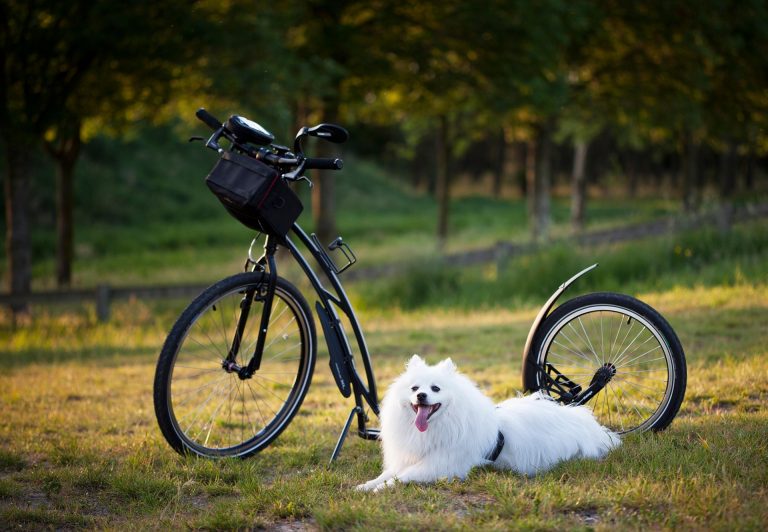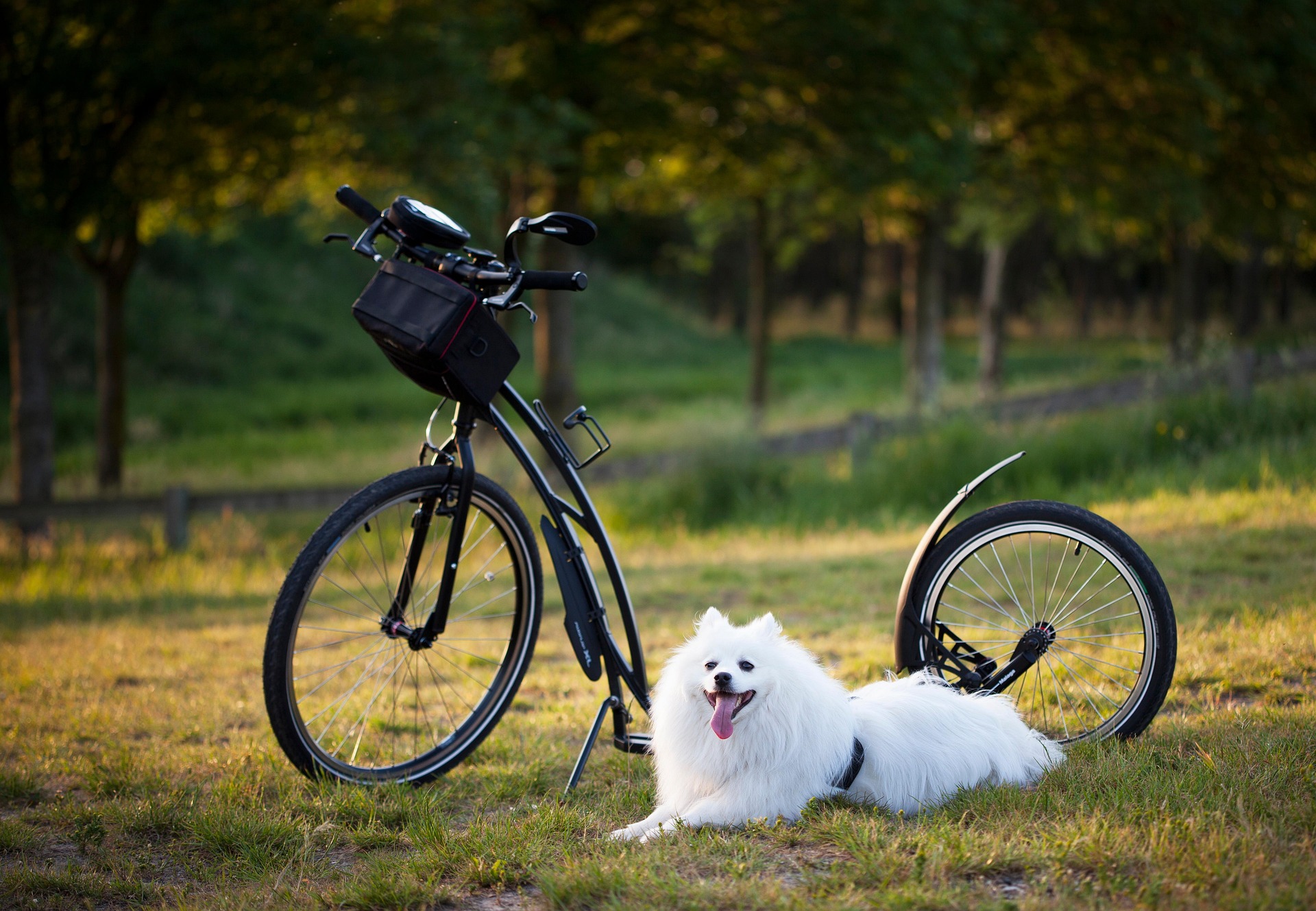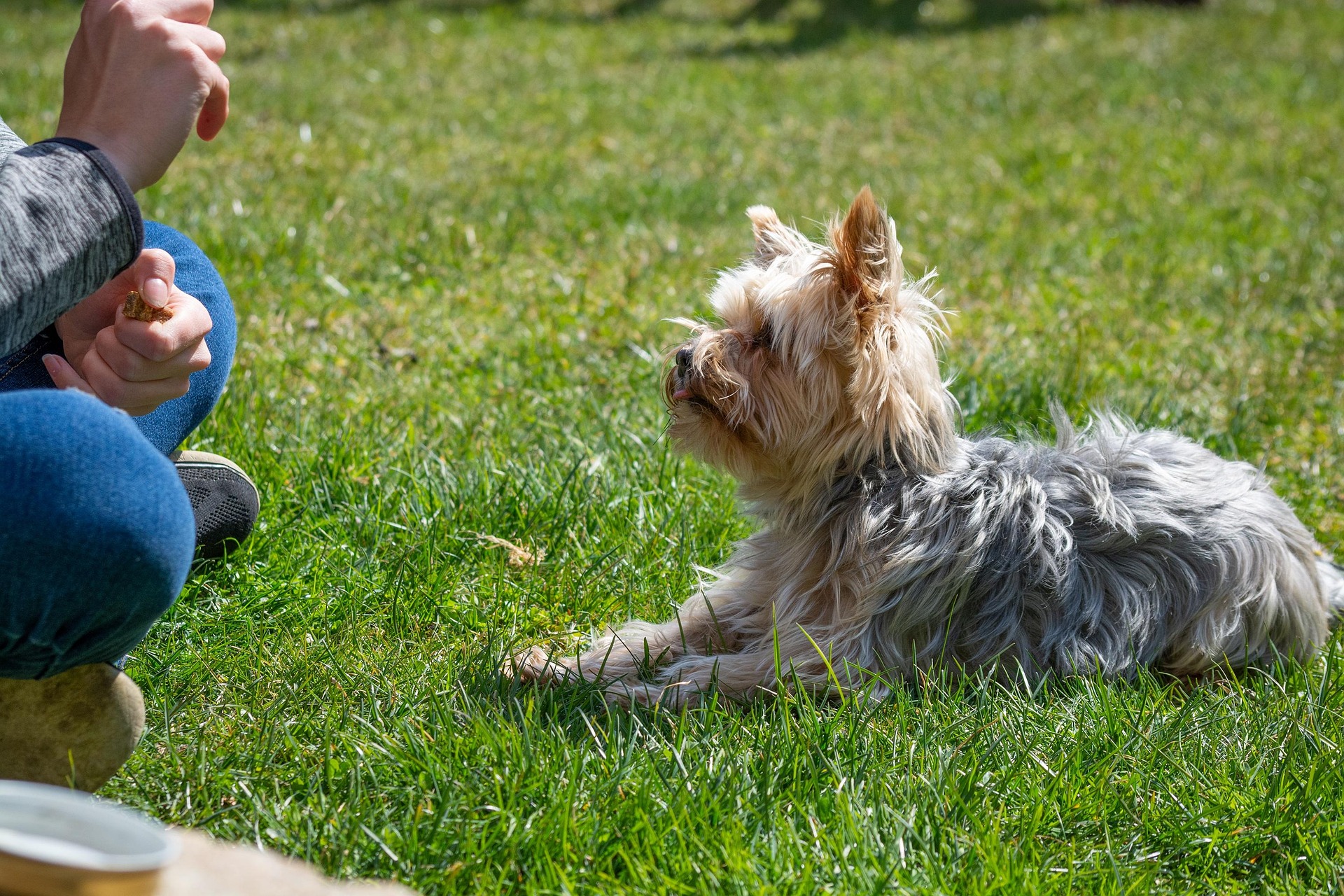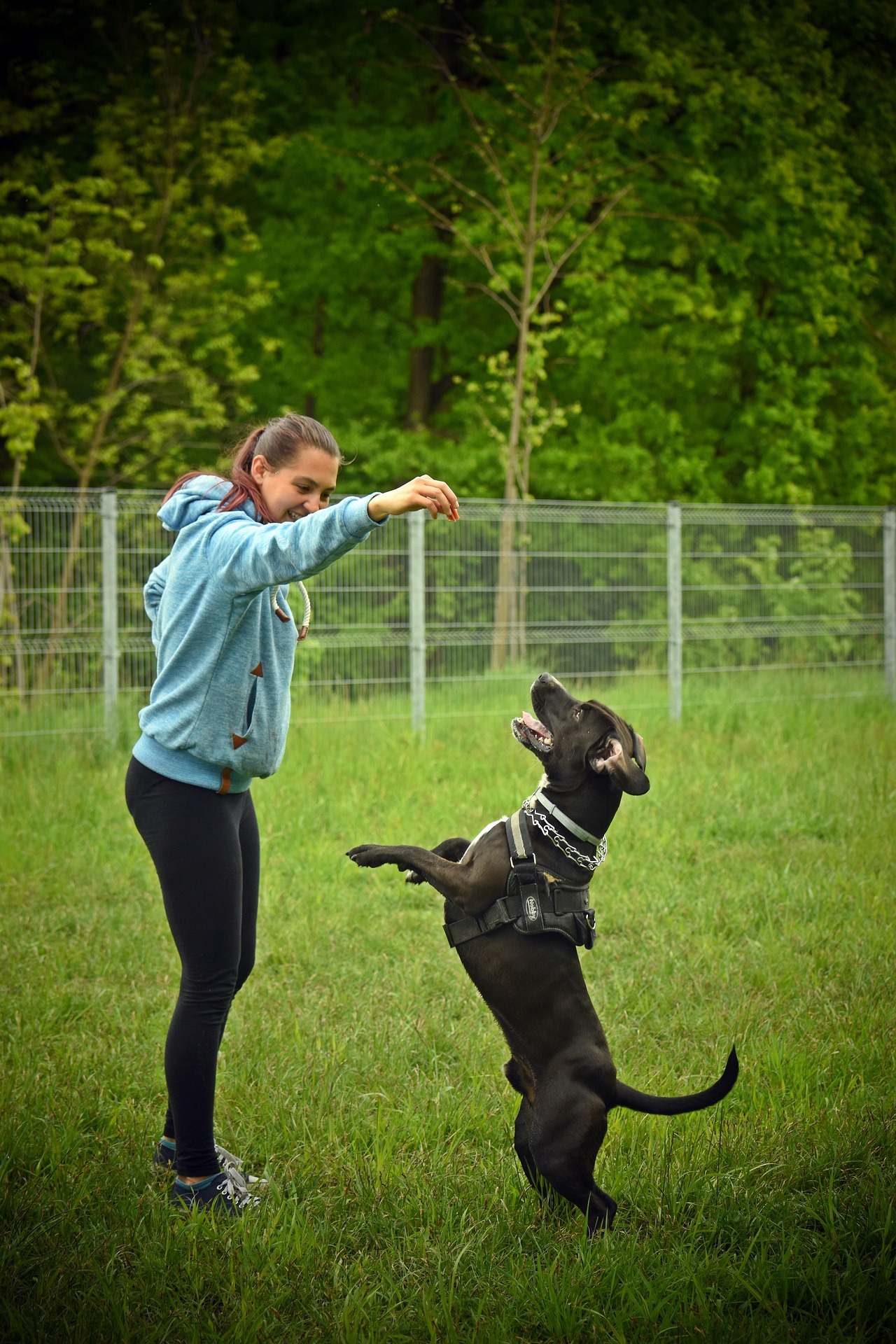Picture this: You call your dog to lie down from across a park. He drops into position, and now you have to shout “Stay! Stay!” repeatedly while you walk toward him. By the time you reach him, you’ve yelled the command six times and your dog looks confused about when he’s actually allowed to move.
This scenario happens because traditional “stay” training creates an unclear endpoint. The dog hears a command but receives no information about when the behavior ends. Pet parents who build “stay” commands use multiple auxiliary signals: body language, eye contact, a stop hand, and intermediate bridges. A release command solves this problem by telling the dog exactly when he’s free to move.
The problem with traditional “stay” commands
When you teach “stay,” you teach your dog to hold a position while you provide continuous reinforcement. The dog learns to watch for your body language, maintain eye contact, respond to your hand signal, and wait for verbal confirmation. Each of these becomes a crutch.
The dog doesn’t learn that “sit” means “sit until further notice.” Instead, he learns “sit and wait for additional signals that tell you to keep sitting.” This creates dependency on constant input from the handler.
Distance work becomes impractical. Here is the problem with this type of training: “Imagine the situation where you call your dog to lie down from 25 meters away, he lies down, and now you have to shout across the field the whole time: ‘Stay! Stay!’ That’s far too cumbersome and not understandable for the dog at all.”
The dog also faces ambiguity about when the behavior actually ends. Does the stay command end when you stop making eye contact? When you drop your hand? When you turn your back? Without clear information, the dog guesses.
What is a release command?
A release command is a specific word or signal that tells your dog he’s free to move from his current position. Common release words include “okay,” “free,” or “break.”
The training philosophy shifts from “hold this position while I remind you” to “hold this position until I tell you otherwise.” When you say “down,” the dog lies down and remains there until he hears his release word or receives a new command.
For example, I tell my dog ‘down’ and he does it until he either gets a release signal or another signal from me.
The command itself contains the duration. “Sit” means sit. “Down” means down. The behavior continues until released.
The advantages of release command training
Clarity and simplicity
Release commands eliminate the need for constant reinforcement. You give one command, and the dog understands the behavior remains in effect. No repeated “stay” commands, no continuous eye contact, no hand signals frozen in place.
The dog learns one clear rule: the command continues until you signal otherwise. This reduces confusion about when the behavior ends.
Practical applications
Distance work becomes possible. You can call your dog to “sit” from 50 meters away. “He sits and waits until you pick him up. You walk 50 meters to your dog without shouting commands across the distance.
At doorways, you tell your dog to sit, open the door, and walk through. The dog waits for his release word before following. You don’t stand in the doorway repeating “stay” while juggling groceries.
When guests arrive, your dog goes to his bed on command and remains there through the greeting process. You release him when the excitement settles.
Faster skill building
Release command training makes it easier to add distance, duration, distraction, and speed. You can increase the time between command and release without adding more verbal reinforcement. You can walk farther away without maintaining constant visual contact. You can introduce distractions without worrying that your dog lacks the continuous signals he’s learned to depend on.
The foundation is clearer, so advanced behaviors build faster.
How to implement release command in training?
Choose a release word that you don’t use in casual conversation. “Okay” works but appears in everyday speech. “Free” or “break” may be better choices. The word should sound distinct and not resemble other commands.
Start with a basic position your dog already knows. Tell your dog to sit. Wait two seconds, then say your release word in an upbeat tone. Encourage your dog to move by taking a step back or patting your leg. Reward the dog when he breaks position after hearing the release word.
Repeat this sequence, gradually increasing the time between the sit command and the release. Start with two seconds, then five, then ten. If your dog breaks position before the release word, reset him without reward and try again with a shorter duration.
Add the release command to other positions: down, place, bed. Keep training sessions short and end before your dog becomes frustrated.
Common mistakes include using the release word in regular conversation, releasing too quickly before the dog learns to hold position, and failing to reset the dog when he breaks early.
Once your dog holds position reliably for 30 seconds, add distance. Give the command, take one step away, return, and release. Gradually increase the distance over multiple sessions.
Add distractions after your dog succeeds with duration and distance. Start with mild distractions like a toy placed nearby, then progress to more challenging scenarios like another person walking past.
Real-world scenarios where release commands work
Off-leash hiking becomes safer. You see another dog approaching on the trail and tell your dog to sit. Your dog holds position while the other dog passes, then you release him to continue the hike. You don’t spend the encounter repeating “stay.”
At doorways and gates, you tell your dog to sit before opening the door. The dog waits while you walk through and only exits after hearing his release word. This prevents door-dashing.
“Place” training becomes more reliable. You send your dog to his bed or mat, and he remains there through various household activities. When the activity ends, you release him.
In public spaces with distractions, your dog can hold a down position while you handle a transaction, tie your shoe, or wait for a table at an outdoor restaurant. The position holds without constant reinforcement.
Emergency situations benefit from release command training. If your dog slips his leash near a road, you can command him to down and know he’ll hold that position while you approach, even if it takes 30 seconds to reach him safely.
Addressing common concerns
Won’t the dog just get up without permission? Initially, yes. That’s why you reset the dog without reward when he breaks early. Over time, the dog learns that the release word predicts freedom and good things, while breaking early results in a boring reset. The release word becomes valuable, and the dog waits for it.
Can you transition from stay to release commands? You can. Start treating your existing commands as having built-in duration. When you tell your dog to sit, wait a few seconds, then introduce your new release word. Over several weeks, stop using “stay” entirely. Your dog learns the new system because the pattern is consistent.
What about dogs already trained with “stay”? The transition takes time but follows the same process. The dog already understands holding position. You’re adding clarity about when that hold ends and removing dependency on auxiliary signals.











